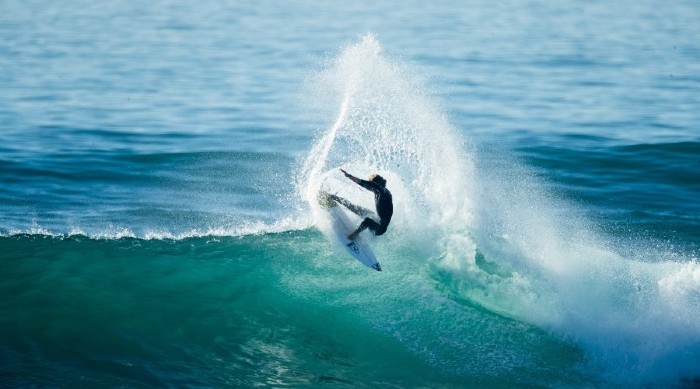-
Enter now !
GIVEAWAY
Win an Epic Snow Escape with Quiksilver x Ski amadé !
-
Login/Register
QUIKSILVER FREEDOM BENEFITS
Free shipping & return
The Ultimate Wetsuit Thickness Guide

Wetsuit technology has evolved since the first modern wetsuit hit lineups in the late 1950s. Now surfers can brave colder waters for longer sessions which opens up new surf locations for exploration.
The thickest suit isn’t always your best option. Overheating while surfing is just as hard as getting cold in the water. We’ll cover everything you need to know about wetsuit thickness and temperature in this guide.
A Quick Note on Wetsuit Thickness
Choose a wetsuit thickness based on the water temperature of your local surf spot and climate. Colder water requires a thicker suit: more millimetres of neoprene for insulation. Wetsuits with two or more numbers feature different thicknesses. For warmth, the thickest neoprene is centred at the core of the body while arms and legs feature thinner neoprene for flexibility paddling.
Wearing booties, gloves or mittens and a hood can offer all-day comfort even in snowy conditions. When picking the right wetsuit thickness for your needs, keep in mind your personal preferences and tolerance for cold. If your feet are numb and you’ve got the shivers, the weight savings from that thinner suit won’t matter too much if you’re too cold to paddle.
Wetsuit Thickness and Temperature Guide
Always consider your personal tolerance for cold. People who run warm may opt for thinner suits, while others need more neoprene to keep cosy. The tradeoff of thicker neoprene can mean more work when paddling and moving around in the water.
| Water Temperature (°C) | Wetsuit Thickness | Type of Wetsuit + Accessories | Weather Considerations | Seam Seal |
| Above 23 °C | None! | Option for rashguard for sun and skin protection | If the wind is strong or you’re out dusk and dawn consider a jacket | Flatlock |
| 18 °C - 23 °C | 0.5mm to 2mm | Jacket, spring suit | Depending on the wind go for a long or short sleeved neoprene jacket paired with boardshorts. If there is a definite chill in the air a traditional shortie is the go. | Flatlock |
| 15 °C - 18 °C | 3/2mm | Full suit | Surfing in windy conditions? Look for a suit with a rubber smoothy panel on the back and chest — this helps block those chilly breezes. | Flatlock or Sealed |
| 12 °C - 15 °C | 4/3mm | Full suit + booties (optional) | When you’ve gone from brisk to cold, it’s time to get out the thicker suit. If you’re going for longer sessions grab a pair of booties — anything in the 3mm to 5mm range will work with these conditions. | Sealed, Sealed + Taped |
| 10 °C - 12 °C | 5/4mm | Full hooded suit + booties + gloves or mittens | Reserved for extreme latitudes and the winter months. | Sealed + Taped |
| 4 °C - 10 °C | 6/5/4mm | Full hooded suit + booties + mittens | Generally the thickest suits. Go extra thick on booties and mittens for these conditions — think 7mm range. | Sealed + Taped |
Your Activity Level and Wetsuit Thickness
One important factor to consider is the intensity of your activity level. Just like you wouldn’t go for a hard run wearing a down jacket, you don’t want to pick a suit that’s too thick if you’re surfing at a high intensity. Doing so may cause you to overheat and tire faster. At the same time, if you’re more selective about waves a thicker suit will keep you warm between sets.
Other Things to Consider When Choosing What Wetsuit Thickness You Need

Water temperature isn’t the only factor to consider when choosing the thickness of your wetsuit. Other variables include wind conditions, sun and your personal tolerance for cold. In windy conditions look for a wetsuit with a rubber panel (also called a smoothie) on the chest and back. This blocks windchill to keep you warmer.
If you’re surfing in overcast conditions, consider stepping up to the next wetsuit thickness as the sun won’t warm you, or the top layer of water.
Whatever wetsuit thickness you decide on, it’s important to pick the right size of wetsuit and take care of it along the way. Check out our guide to getting the right fit and how to care for your wetsuit. That’s the best way to stay warm and comfortable in the water, no matter what the conditions throw at you.
SHOP WETSUITS


